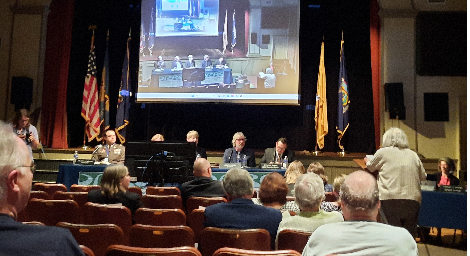Air Pollution Becoming a Basin Concern: Ozone levels in Utah
October 5, 2010SPECIAL REPORT: THE GREAT SHALE GAS RUSH
October 19, 2010A preliminary study by Academy of Natural Sciences researchers suggests that even without spills or other accidents, drilling for natural gas in Pennsylvania’s rich Marcellus Shale formation could degrade nearby streams.
The researchers compared watersheds where there was no or little drilling to watersheds where there was a high density of drilling, and found significant changes.
Water conductivity, an indicator of contamination by salts that are a component of drilling wastewater, was almost twice as high in streams with high-density drilling.
Populations of salamanders and aquatic insects, animals sensitive to pollution, were 25 percent lower in streams with the most drilling activity.
An industry spokesman declined to comment on the findings.
The researchers at the academy, the nation’s oldest natural-science research center and a leader in stream biology, emphasized that their study was not looking at drilling accidents or other irregularities, but whether – and if so, at what point – drilling posed a potential for harm.
David Velinsky, vice president of the academy’s Patrick Center for Environmental Research, said of the early findings: “This suggests there is indeed a threshold at which drilling – regardless of how it is practiced – will have a significant impact on an ecosystem.”
A certain number of well pads in a given area “might be OK,” he said. “Conversely, it may not be OK.”
The intent of the research, he said, is “to try to find where that stands, to look at cumulative impacts across a gradient of drilling.”
The academy researchers are using the study, which has not been peer-reviewed or published in a scientific journal, as the basis for requesting state funds to do a much larger and more comprehensive study, Velinsky said.
Travis Windle, a spokesman for the Canonsburg, Pa.-based industry group Marcellus Shale Coalition, said in an e-mail that the group “does not comment on preliminary, non-peer reviewed, unreleased ‘studies’ that we have not even had the opportunity to examine.”
He did say that total dissolved solids – another often-used indicator of salt contamination – in a stream was not necessarily the fault of drilling.
“Pennsylvania has a long history of high TDS levels in our waterways – long before Marcellus production commenced just a few years ago,” he said.
Velinsky agreed that there are other sources of salts and solids, including road salt and fertilizer.



